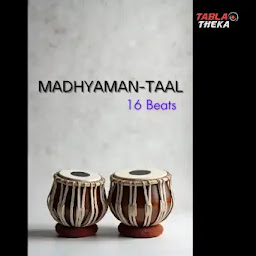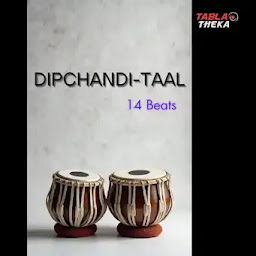Welcome to the Tabla Theka blog, your trusted resource for learning tabla.

An Introduction to Khemta Taal
Khemta Taal is a unique and popular 12-beat rhythmic cycle in Indian music, widely cherished in folk and light classical genres. **Known for its catchy, dance-like feel, Khemta Taal is often associated with Bengali folk traditions.** Mastering this taal is an excellent step for any tabla student looking to expand their repertoire beyond common taals like Dadra or Keherwa.
Watch a Live Demonstration of Khemta Taal
The Structure and Characteristics of Khemta Taal
Khemta Taal is composed of 12 matras (beats) organized into 4 equal vibhags (divisions) of 3 beats each. Its rhythmic pattern is marked by 3 taalis (claps) and 1 khaali (wave), creating a lively and balanced feel.
| Beats (Matra) | 12 |
|---|---|
| Divisions (Vibhag) | 4 (Pattern: 3|3|3|3) |
| Clap (Taali) | 3 (On the 1st, 4th, and 10th beats) |
| Wave (Khali) | 1 (On the 7th beat) |
| First Beat (Sam) | On the 1st beat, marked with an 'X' |
| Common Tempo (Laya) | Medium (Madhya) |
Theka Notation for Khemta Taal
The Theka (foundational phrase) for Khemta Taal is presented below in a single, unified table, structured for clarity and ease of reading.
| 1 | 2 | 3 | 4 | 5 | 6 |
|---|---|---|---|---|---|
| Dha | Ti | Te | Na | Dhi | Na |
| X (Sam) | 2(Clap) | ||||
| 7 | 8 | 9 | 10 | 11 | 12 |
| Ta | Ti | Te | Dha | Dhi | Na |
| 0 (Wave) | 3(Clap) | ||||
Understanding the Taal Signs
- Sam (X): Marks the first and most emphasized beat of the rhythmic cycle.
- Taali (2, 3, etc.): A clap that signifies a stressed division, numbered sequentially after the Sam.
- Khali (0): A wave of the hand, indicating an unstressed or "empty" division, which adds a unique swing to the rhythm.
- Matra: A single beat, the fundamental unit of time in any taal.
**How to Practice Khemta Taal Effectively**
**For beginners, mastering Khemta Taal requires patience and systematic practice. Here are some tips to get you started:**
- **Start Slowly:** Begin practicing the theka at a very slow tempo (vilambit laya). Focus on producing clear and accurate bols for each beat.
- **Use a Metronome or Lehra:** Practice with a metronome or a lehra app to maintain a steady rhythm and improve your timing.
- **Count with Hand Gestures:** Recite the bols aloud while keeping time with taali and khaali. This will help internalize the rhythmic structure.
- **Listen Actively:** Find songs or instrumental pieces based on Khemta Taal and listen to them carefully. This will help you understand its practical application and feel.
Common Applications and Performance Use
Khemta Taal is primarily used in:
- Folk Music: It is a cornerstone of Bengali folk music, including Baul and Bhatiali songs.
- Devotional Music: Widely used in Bhajans, Kirtans, and other forms of devotional music due to its uplifting nature.
- Light Classical Music: Often heard in Thumri, Dadra, and Ghazals.
- Dance Forms: It enhances the quality of creative rhythm in classical dance programs, particularly in Kathak.
Final Thoughts
Khemta Taal, with its unique 12-beat rhythm cycle, makes a significant positive impact on both vocal and instrumental performances. Its balanced 3|3|3|3 structure offers a different feel from the more complex 12-beat Ektaal, making it a cherished and accessible rhythm in the world of Indian music.





































